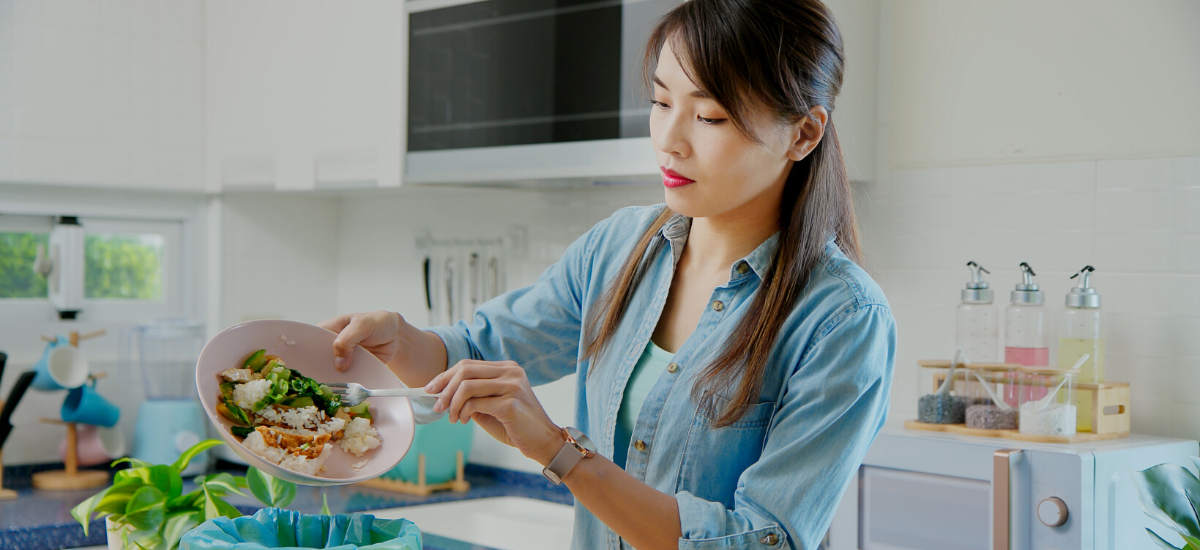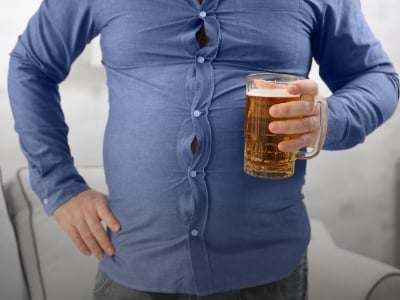Published on 17 December 2023
Facts about leftover food you need to know before reheating your dinner from last night.
Have you ever cooked or ordered too much food, and decided to not waste and save the leftovers in the fridge for the following day?
You are not alone – eating leftover food can be common in most Singaporean households.
While it might be a norm for some, there are dangers to eating leftover food that you might not be aware of.
Reheating food may not always kill bacteria
Though many may deem food to be safe for consumption after it has been reheated, Ms Bernice Tan, a dietitian at National University Polyclinics (NUP) says that “bacteria multiplies quickly between 5°C and 60°C”.
Therefore, it is important that you keep food out of this range of temperature to reduce the risk of food poisoning.
“To minimise the risk of bacterial growth and food-borne illnesses, it is crucial to ensure the proper storage and reheating of food that is kept overnight. This is especially so if the food has been kept at room temperature,” cautioned Ms Tan.
Ms Tan added that refrigerated cooked food can only be stored for up to four days. Beyond that, food should be stored in the freezer. In addition, leftover food should be reheated to a minimum temperature of 75°C and should not be reheated more than once. “You can use a kitchen thermometer to check the temperature of the food. For soups, sauces, and gravies, reheat them to a boil,” suggested Ms Tan. Leftover food gone bad The improper storage and reheating of leftover food can pose various risks, including nutrient degradation, cross-contamination with raw food, and ultimately, food spoilage. To avoid falling severely ill from consuming spoiled food, it is crucial to thoroughly inspect any leftovers for signs of spoilage. “Use your judgement…make full use of your sight, smell, and touch – check for any mould, discolouration, unusual texture, if it smells different or gives off a bad odour,” said Ms Tan. “When in doubt, it is best to discard any food you suspect that has been left out for too long. Otherwise, you may experience symptoms of food poisoning such as nausea, vomiting, diarrhoea, and abdominal pain.” Leave no leftovers behind The best way to avoid falling ill from leftover food is to not have any in the first place. Ms Tan acknowledged that this might not always be possible. “Leftovers are sometimes inevitable. Miscalculation in portion sizes, or last-minute changes in plans, may lead to having leftovers,” Ms Tan admitted. There are steps that you can take to minimise the chances of having leftovers at your next meal. “Plan your meals and portion sizes,” Ms Tan said. “Use a grocery shopping list when you buy food, so you do not buy too much. You can also explore the option of donating any excess food you may have.” ••••••••••••••••••••••••••••••••••••••••••••••••••••••••••••••••••••••••••••••••••••••••••••••••••••••••••••••••••••••••••••••••••••••••••••••••••••••••••••••••••••••••••••••••••••••••••••••••••••••••••••••••••••••••••••••••••••••••••
Storage lifespan of leftover food in the fridge
Potential risks from improperly stored leftovers
Guide to storing food in the refrigerator
Cooked meat, poultry or seafood 3 - 4 days Cooked grains or pasta 3 - 4 days Leafy or salad greens 3 - 5 days Cut or sliced fruits 2 - 3 days Decreased nutritional quality Higher risk of illness amongst immune-compromised individuals Foodborne illnesses Dont’s
Do’s
•••••••••••••••••••••••••••••••••••••••••••••••••••••••••••••••••••••••••••••••••••••••••••••••••••••••••••••••••••••••••••••••••••••••••••••••••••••••••••••••••••••••••••••••••••••••••••••••••••••••••••••••••••••••••••••••••••••••••••••••••••••••••••••••••••••••••••••••••••••••••••••••••••••••••••••••••••••••••••••••••••••••••••••••••••••••••••••••••••••••••••••••••••••••••••••••••••••••••
Keep leftovers for an extended period and reheat more than once Thaw food at room temperature Keep fruits and vegetables in the same compartment Store hot food directly in the refrigerator Refreeze thawed food
•••••••••••••••••••••••••••••••••••••••••••••••••••••••••••••••••••••••••••••••••••••••••••••••
•••••••••••••••••••••••••••••••••••••••••••••••••••••••••••••••••••••••••••••••••••••••••••••••
•••••••••••••••••••••••••••••••••••••••••••••••••••••••••••••••••••••••••••••••••••••••••••••••
••••••••••••••••••••••••••••••••••••••••••••••••••••••••••••••••••••••••••••••••••••••••••••••••
•••••••••••••••••••••••••••••••••••••••••••••••••••••••••••••••••••••••••••••••••••••••••••••••••
•••••••••••••••••••••••••••••••••••••••••••••••••••••••••••••••••••••••••••••••••••••••••••••••
•••••••••••••••••••••••••••••••••••••••••••••••••••••••••••••••••••••••••••••••••••••••••••••••••••••••••••••••••••••••••••••••••••••••••••••••••••••••••••••••••••••••••••••••••••••••••••••••••••••••••
Chill cooked and raw food within 2 hours Separate cooked and raw food Keep perishables in a specific compartment of the fridge Portion and store leftovers in small containers Keep raw meat in a separate bag or container and use within 2-3 days 2h
In consultation with Ms Bernice Tan, Dietitian, NUP .
Download the full infographics here .



